
Etobicoke is an administrative district and former city within Toronto, Ontario, Canada. Comprising the city's west end, Etobicoke is bordered on the south by Lake Ontario, on the east by the Humber River, on the west by Etobicoke Creek, the cities of Brampton, and Mississauga, the Toronto Pearson International Airport, and on the north by the city of Vaughan at Steeles Avenue West.

Leaside (/'liːˌsaɪd/) is a neighbourhood in Toronto, Ontario, Canada. It is located northeast of Downtown Toronto, in the vicinity of Eglinton Avenue East and Bayview Avenue. The area takes its name from William Lea and the Lea family, who settled there in the early years of the 19th century. The area first developed as farmland along with Toronto through the 19th century. It was incorporated as a town in 1913. In 1967, it amalgamated with the township of East York to form the borough of East York. In 1998, it became part of the city of Toronto. It is one of the most expensive and exclusive neighbourhoods in the city.

Deer Park is a neighbourhood in Toronto, Ontario, Canada. It is centered on the intersection of Yonge Street and St. Clair Avenue and its boundaries are the Vale of Avoca section of Rosedale ravine in the east, Farnham Avenue and Jackes Avenue in the south, Avenue Road and Oriole Parkway in the west, the Beltline Trail in the north on the west side of Yonge Street, and Glen Elm Avenue in the north on the east side of Yonge Street. For the purposes of social policy analysis and research, the Toronto government’s Social Development & Administration division includes Deer Park within the City of Toronto's official "Rosedale-Moore Park" and "Yonge-St.Clair" neighbourhood profiles. The neighbourhood is in Ward 22, represented by Councillor Josh Matlow at Toronto City Council.
St. James-Bond United Church, at 1066 Avenue Road in Toronto, Ontario, was a United Church of Canada congregation from 1928 to 2005, when it merged with Fairlawn Heights United Church in the Yonge Street and Lawrence Avenue area. The "St. James-Bond" name derived from the merger of St. James Square Presbyterian Church with Bond Street Congregational Church in 1928. Prior to the merger, they were separate congregations downtown, of the Presbyterian and Congregational traditions respectively.
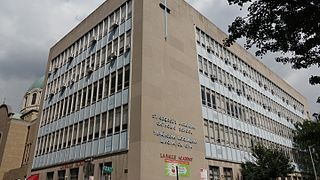
La Salle Academy is an American private, Catholic all-boys' high school in the Manhattan borough of New York City, New York.

The Toronto Catholic District School Board is an English-language public-separate school board for Toronto, Ontario, Canada, headquartered in North York. It is one of the two English boards of education serving the city of Toronto. With more than 84,000 students, the TCDSB is one of the largest school boards in Canada, and is the largest publicly funded Catholic school board in the world. Until 1998, it was known as the Metropolitan Separate School Board (MSSB) as an anglophone and francophone separate school district.

The Bank of Upper Canada Building is a former bank building in Toronto, Ontario, Canada, and one of the few remaining buildings in Toronto that predate the 1834 incorporation of the city. It is located at 252 Adelaide Street East, in the Old Town district. Opened in 1827, in what was then the town of York, the building housed the Bank of Upper Canada until the bank's collapse in 1866. It was then used for school purposes and later for various commercial and industrial purposes before being restored in 1982 as commercial office space. The building has been designated a National Historic Site of Canada since 1977.

Francis Libermann Catholic High School is a Catholic secondary school in Toronto, Ontario, Canada. It is located in the Agincourt neighbourhood of Scarborough, and part of the Toronto Catholic District School Board, formerly the Metropolitan Separate School Board.

Senator O'Connor College School, previously known as John J. Lynch High School until 1967 is a Separate high school in the Parkwoods neighbourhood in the North York district of Toronto, Ontario, Canada serving grades 9 to 12 in the communities of Wexford, Maryvale, Don Mills, and Dorset Park.

De La Salle College "Oaklands" is an independent, co-educational, Catholic college preparatory institution run by the Institute of the Brothers of the Christian Schools in Toronto, Ontario. Founded by the Christian Brothers in 1851, it offers a rigorous liberal arts education from grades 5 through 12, consistent with its Lasallian traditions and values.
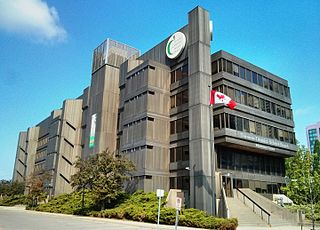
Education in Toronto is primarily provided publicly and is overseen by Ontario's Ministry of Education. The city is home to a number of elementary, secondary, and post-secondary institutions. In addition to those institutions, the city is also home to several specialty and supplementary schools, which provide schooling for specific crafts or are intended to provide additional educational support.
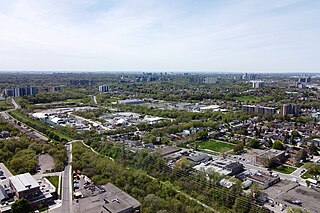
Rockcliffe–Smythe is a neighbourhood in Toronto, Ontario, Canada. It was developed after World War II as part of the urbanization of the former suburb of York Township. It is in Ward 5 in the City of Toronto.

Clairlea is a safe, quiet, middle to upper-middle income neighbourhood in Toronto, Ontario, Canada that features well treed streets and detached homes with large backyards. The neighbourhood is located in east Toronto just east of Victoria Park Avenue.

Princess Gardens is a neighbourhood in Toronto, Ontario, Canada. It is located in the western area of Toronto that was formerly the City of Etobicoke. Its boundaries are Eglinton Avenue to the north, Martin Grove to the west, Islington to the east, and Rathburn Road to the south. The southeastern part of this area is the separate neighbourhood of Thorncrest Village. The neighbourhood is divided into two areas: The portion east of Kipling Road is known as Princess Anne Manor, while the portion west of Kipling is Princess Margaret Gardens. They are named after Princess Anne, Princess Royal, and Princess Margaret, Countess of Snowdon, the daughter and sister of the late Queen Elizabeth II respectively. Both Princesses visited the Gardens and opened up Princess Margaret Public School during its opening ceremony. The southwestern part of the neighbourhood is also sometimes known as Glen Agar. Princess Gardens has some of the highest income Canadians in the Greater Toronto Area according to a 2016 census, at an average of $222,218 per year.

St. Patrick Catholic Secondary School is a Roman Catholic high school located in Toronto, Ontario, Canada as part of the Toronto Catholic District School Board. It is dedicated to Saint Patrick of Ireland and St. Marguerite Bourgeoys, the founder of the Congregation of Notre Dame. One of Toronto's oldest schools, St. Patrick's used to be an elementary school founded in 1852 until 1983 and turned into a secondary school which opened in 1986 on D'Arcy Street. Since September 1989, St. Patrick had been moved from downtown Toronto into the former Lakeview Secondary School in Toronto's east end. The motto for St. Patrick is "Amor Christi nos impellit" which translates to English as "The Love of Christ Impels Us".
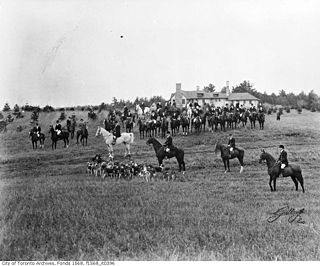
The Toronto Hunt Club was established in 1843 as a fox hunting club by British Army officers of the Toronto garrison. It held gymkhana equestrian events at various sites around Toronto. In 1895, it acquired its first permanent home in a rural area east of the city in Scarborough, between Kingston Road and Lake Ontario.

Tabor Park Vocational School is a public high school in Toronto, Ontario, Canada. It is a Toronto District School Board facility that operated as a public and vocational high school established in 1965 until 1986 to meet the needs of the large baby boom generation in the newly and rapidly developing area of the city operated by the Scarborough Board of Education until its merger with the TDSB in 1998.
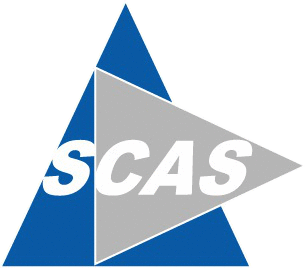
Scarborough Centre for Alternative Studies (SCAS), formerly Tabor Park Vocational School is an alternative and adult high school serving Scarborough, a part of Toronto, Ontario, Canada. It operates under the Toronto District School Board and was previously part of the pre-amalgamated board, Scarborough Board of Education prior to merger. Originated at Birchmount Park Collegiate Institute in 1977 as the re-entry program, the school opened in 1986 at the Tabor Park building and as of 2010, the school is located in the campus of the former Midland Avenue Collegiate Institute sharing with the fellow schools, South East Year Round Alternative Centre and Caring and Safe Schools Alternative Program Area C. SCAS is located on Midland Avenue south of Eglinton Avenue East.

Lakeview Secondary School, formerly East End High School is a Toronto District School Board public and vocational high school facility that was formerly operated as a secondary school by the Toronto Board of Education from 1967 until 1989 located in Felstad Drive in Toronto, Ontario, Canada serving the Board's Ward 15. Founded in 1967, the current building was built in 1972. The Lakeview property, as of January 2015, remains currently owned by the TDSB.

Avenue is an underground light rail transit (LRT) station under construction on Line 5 Eglinton, a new line that is part of the Toronto subway system. The station is located in North Toronto on Eglinton Avenue between Avenue Road and Highbourne Road. It is the deepest underground station on the line. Destinations include the Chaplin Estates neighbourhood, Marshall McLuhan Catholic Secondary School, the Eglinton Theatre, and Eglinton Park. The station is scheduled to open in 2024.





















